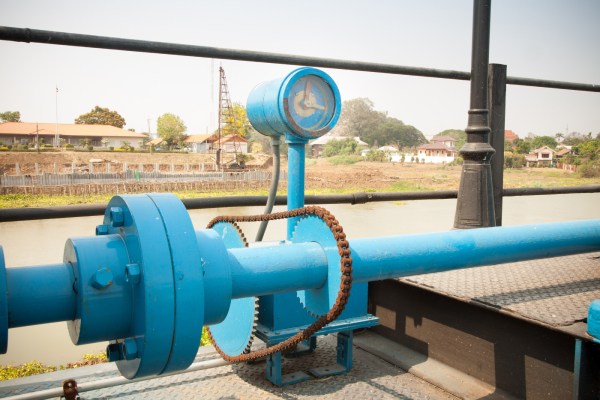

Modeling natural gas flow through pipelines is crucial for optimizing system efficiency and ensuring safety. The SINET Fluid Flow simulator provides an accurate solution by solving real gas flow conditions using an equation of state. This approach enables engineers to model realistic pipeline performance without relying on simplifying assumptions that might compromise the integrity of the analysis.
In this case study, we simulate a horizontal natural gas pipeline that stretches 50 miles. The pipeline has an outer diameter of 26 inches and an inner diameter of 25.44 inches. The temperature of the flowing gas is adjusted to 62°F, and the upstream pressure is set to 810 psia, while the downstream pressure is 550 psia.
The flow rate through the pipeline is an essential factor in understanding system performance. Using SINET Fluid Flow, the calculated flow rate is 452.1 MMft³/day, which is closely aligned with the reference value of 455 MMft³/day from published literature. This comparison reflects standard conditions at 14.65 psia and 60°F. The slight difference in flow rate is primarily due to variations in real gas density under actual conditions, which SINET Fluid Flow captures more precisely than traditional ideal gas models.
As the gas travels through the pipeline from the upstream to the downstream end, a pressure drop occurs, which significantly impacts the gas's physical properties. This pressure drop leads to a change in the gas’s density and can contribute to flash boiling or phase changes. These factors are crucial for understanding flow behavior in real-world conditions. The SINET Fluid Flow simulator considers these changes in real time, offering insights into how pressure fluctuations affect the gas mixture along the pipeline.
The upstream pressure is initially set at 810 psia, with the gas temperature at 62°F. As the gas flows downstream, the pressure decreases to 550 psia. This drop in pressure not only impacts the density and flow rate but also influences the gas’s phase behavior. The SINET Fluid Flow simulator tracks these changes and provides a detailed view of the pressure profile, ensuring the system operates at optimal conditions.
Using SINET Fluid Flow, engineers can simulate how the gas behaves under varying conditions, optimizing the pipeline’s design to prevent operational issues such as gas condensation or cavitation. The software allows for an accurate assessment of how pressure drops along the pipeline might impact the system’s overall performance, helping identify potential risks and inefficiencies. By simulating these factors, engineers can proactively adjust the design or operational parameters to maintain smooth, efficient flow throughout the pipeline.
This case study highlights the capabilities of SINET Fluid Flow in accurately modeling real gas flow conditions in natural gas pipelines. By using an equation of state to solve for real gas conditions, SINET Fluid Flow offers a highly accurate prediction of pressure drops, flow rates, and other critical parameters that influence pipeline performance.
Whether managing pressure changes, optimizing pipeline dimensions, or addressing the impacts of changing gas conditions, SINET Fluid Flow provides engineers with the tools needed to model and design efficient, reliable natural gas systems. This software ensures that pipeline systems operate at peak performance, minimizing risks and enhancing overall system reliability.